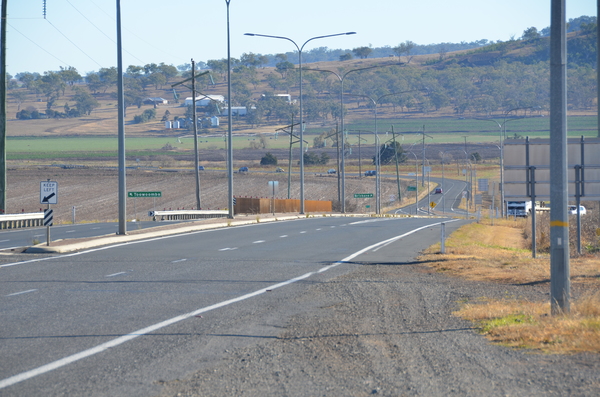By DANE LILLINGSTONE
A BUSINESS case for a solution to the infamous Eight Mile intersection in Warwick is expected to be completed in January next year.
A spokesperson for the Department of Transport and Main Roads said that a planning project was due early next year.
“We’re currently undertaking a planning project to determine the preferred option for this intersection,” a statement said.
“The planning is progressing, with one of the options under consideration involving an overpass for traffic travelling from Toowoomba to Warwick (passing over and then merging with the Cunningham Highway).”
“The business case is due to be completed by January 2016.”
Opposition Leader Lawrence Springborg said that he was pleased the LNP’s planning was being continued by the Queensland Government.
“From my perspective, I’m pleased the planning process that we put in place in government is continuing. It is critical that something is done to make this intersection safe. Regardless of peoples’ personal view on this, it’s safety issues that have been brought out by some very serious incidents there,” he said.
“I don’t have unrealistic expectations, I know there that are lots of priorities for roads, and I understand that and normally the planning process has a lead time of three or potentially four years.”
Mr Springborg said he had experienced the dangers of the intersection first-hand.
“All I know from my own personal experience on the Eight Mile, when someone pulled out in front of me coming from Toowoomba, right in front, is that there are issues there and the experiences of other people that had numerous and tragic outcomes, shows that something has to be done,” he said.
“I think it could have happened (sooner). It was always going to take some years to identify the funds.
“The LNP in government in Queensland had prioritised this as a project and that would have delivered it sooner.
“My encouragement for the current government, as they go through their planning process, is to keep it as a priority. That’s the most critically important thing.”
Mr Springborg said that any solution would need to be funded largely by the Federal Government.
“Eighty per cent of funding would need to come from the Commonwealth, 20 per cent from the State,” he said.
“This is a priority for my area, we do need to get it on the list and I think people will be comfortable with that when they know what we have prioritised will be progressing in the future.”







